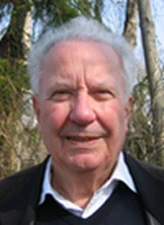Gerhard Haerendel

The 2010 Jean Dominique Cassini Medal & Honorary Membership is awarded to Gerhard Haerendel for his pivotal role in the European exploration of space.
Gerhard Haerendel has been a pivotal figure in the European exploration of space throughout his career. He was born in 1935, and received his Ph.D. (Dr. rer. nat.) in Physics from the University of Munich in 1963. In 1969 he became Fellow (Wissenschaftliches Mitglied) of the Max-Planck-Institut für Physik und Astrophysik and in 1972 Director of the Max-Planck-Institut für extraterrestrische Physik (MPE), from which he retired at the end of 2000. In 1987 he was appointed Honorarprofessor at the Technische Universität Braunschweig. He was Visiting Professor at the University of Iowa in 1988 and at the University of California, Berkeley, in 2000. Since 1986 he has been Co-Director of the Skinakas Observatory (Crete). From 1982 to 1984 he was Chairman of the Council of the European Incoherent Scatter Radar (EISCAT). Since 1989 he has been Vice President of the International Academy of Astronautics and from 1994 onwards, President of the Committee on Space Research (COSPAR). In September 2000, he became Vice President and Dean of Engineering and Science at International University Bremen.
He has more than 30 years of experience in space research, including the function of P.I. of several international rocket and satellite projects such as PORCUPINE, Coloured Bubbles, AMPTE, CRRES, FREJA, and EQUATOR-S. The sounding rocket work pioneered the application of the barium plasma cloud technique to various aspects of plasma and magnetospheric physics, culminating in the creation of artificial comets in 1984 and 1985. Haerendel was one of the fathers of the CLUSTER mission. His pioneering work opened a new view towards the understanding of plasma in space and its interaction with the solar wind. Interpretations of satellite data led to the discovery of dayside boundary layers, small-scale reconnection events, high-beta plasma blobs in the magnetosphere and the in situ confirmation of reconnection. Theoretical work includes motion of plasma clouds, formation of ionospheric irregularities, equatorial spread-F, ambipolar diffusion, diffusion of trapped particles, wave-particle interactions, reconnection, boundary layers, auroral arcs, cometary interactions, origin of spicules, solar flares and gamma-ray production in neutron stars. He has more than 260 publications, membership in several professional societies and academies, and has received several awards.
Medal lecture video (YouTube) of the Jean Dominique Cassini Medal given at the EGU General Assembly 2010.
